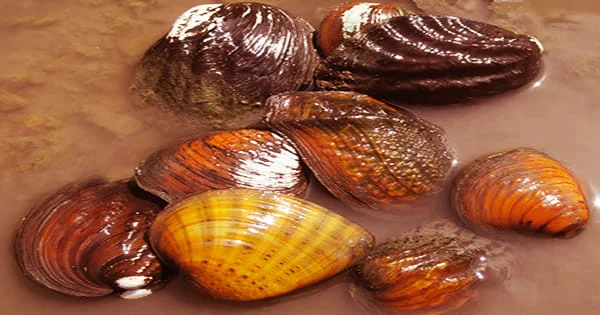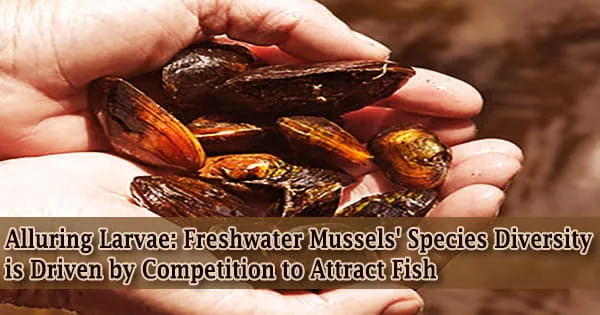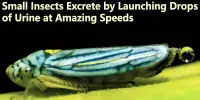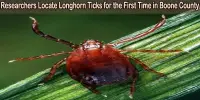Freshwater mussels in North America are both incredibly diversified and critically endangered. In the United States and Canada, there are about 300 species of hard-shelled bottom dwellers, with up to 40 species found on a single stretch of a clean, quickly moving river.
Freshwater mussels are likewise a perplexing group: how can so many species coexist while feeding on the same sediments, plankton, and other water-borne particles? In the natural world, a few species usually gain an advantage over others and eventually out-compete them.
The peculiar ecology of their microscopic, short-lived larvae, rather than the long-lived adults, is a key to understanding the coexistence of many freshwater mussel species, according to a new genomic analysis of North American freshwater mussels by University of Michigan biologists.
Female Lampsilini freshwater mussels have evolved a bizarre variety of lures that employ mimicry to attract adjacent fish and “infect” them with mussel larvae, which subsequently metamorphosis on the fish’s gills or fins before dropping to the river bottom as young mussels weeks later. A tribe is a taxonomic rank in biology that is above genus but below family and subfamily.
To complete their development, the larvae of each lampsiline mussel species must infect a certain type of freshwater fish, such as bass, sunfish, darters, sculpins, or drums. The mussel larvae are obligatory parasites, and the fish that shelter and distribute them are their hosts, according to ecology.

According to the authors of a report published online November 16, 2021, in the journal PeerJ, the struggle for host fishes best explains the coexistence of numerous lampsiline species.
According to the U-M researchers, the wide diversity of accessible fishes and mussel species’ capacity to target certain fish hosts has resulted to specialized host-infection behaviors and the creation of new species through time through a process known as adaptive radiation.
“This study provides an exciting new paradigm for how much of North America’s rich, but highly endangered, freshwater mussel fauna has evolved, and it highlights the cryptic role their remarkably complicated and interesting larval life histories has played in that process,” said the study senior author Diarmaid O’Foighil, a professor in the U-M Department of Ecology and Evolutionary Biology and a curator at the Museum of Zoology.
Trevor Hewitt, a U-M Ph.D. candidate who completed the research for his EEB dissertation, is the study’s lead author. Adaptive radiation is a burst of evolution that takes advantage of a favorable ecological situation to produce multiple new species from a single parent species.
Adaptive radiations are common in nature, and they frequently entail a population of a particular species migrating to new areas. Individuals carve out specialized roles, or niches, in those settings, progressively distinguishing themselves from the parent species and one another.
Darwin’s finches, Hawaiian silversword plants, cichlid fishes of the East African Great Lakes and South American rivers, and Caribbean anole lizards are all well-known examples.
This study provides an exciting new paradigm for how much of North America’s rich, but highly endangered, freshwater mussel fauna has evolved, and it highlights the cryptic role their remarkably complicated and interesting larval life histories has played in that process.
Diarmaid O’Foighil
However, in each of these examples, the focus is on adult organisms and their adaptations to new environments and lifestyles. According to Hewitt, the freshwater mussel study is one of the first to identify adaptive radiation focusing on an organism’s larval ecological niches.
“To our knowledge, this is also the first time that this prominent model of speciation adaptive radiation has been proposed for a freshwater mussel lineage,” Hewitt said. “In addition, we constructed the first genomic lampsiline phylogeny in order to place the diversity of host use, and host infection strategies, into a robust evolutionary context.”
Tissue samples were collected from 54 lampsiline mussel species in the field (using a nonlethal biopsy technique) and from museum specimens for the study. The tissue samples’ genomic DNA was extracted and sequenced. The genetic data was then used to create a phylogeny for lampsiline mussels, which biologists refer to as a family tree.
Lampsiline mussels were chosen for the study due to their vast species diversity, the abundance of background knowledge on host-fish specificity, and, most crucially, the fact that lampsilines are primarily specialized parasites.
The researchers were able to test the prediction that the mussels’ fish-targeting preferences, if maintained over long timescales, would lead to adaptive radiations centered on their larval stage and characterized by the evolution of specialized host-infection behaviors, using information about modern-day lampsilines combined with insights about evolutionary relationships preserved in their DNA.
The findings backed up that theory, implying that lampsiline mussels are a real example of adaptive radiation.
Mantle lures and brood lures are the two primary types of lures used by pregnant female lampsiline mussels in the wild to attract fish.
Some females use a mantle lure, a fleshy appendage that resembles a minnow, crayfish, worm, or other small creature that a larger fish might wish to eat. Instead of an easy meal, the predator fish receives a mouthful of parasitic mussel larvae when it bites.
Other lampsiline mussels use a brood lure, in which pregnant females make a gelatinous, larvae-filled mass in the shape of a bug, a tiny fish, or other food items, then release it to float freely in the water. Others reproduce without using lures, instead of releasing their larvae into the water in a process known as broadcast release.
In the lampsiline mussels, the new study discovered evidence for the early development of mantle lures, with brood lures and broadcast infection tactics developing independently. The most prevalent method was a hybrid of mantle lures and simple, nonmimetic brood lures released at the end of the season by pregnant females.
Several problems, including water pollution, river damming, and competition from nonnative species, have put nearly 70% of U.S. freshwater mussel species in jeopardy. Because their survival is dependent on the health of the host fish, parasitic larval growth renders these mussels even more vulnerable.
22 animals and one plant species are likely extinct, according to US wildlife officials, and should be removed off the endangered species list. Freshwater mussels account for eight of the 23 species, with six of the eight being lampsilines.
The other author of the PeerJ study is Amanda Haponski of the U-M Department of Ecology and Evolutionary Biology. Funding for the study was provided by U-M’s Rackham Graduate School, the U-M Department of Ecology and Evolutionary Biology’s Dr. Nancy Williams Walls Award for Field Research, and the U-M Museum of Zoology’s John B. Burch Malacology Fund.
















